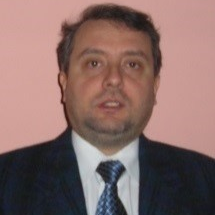Photochemical Processes in Surface Waters, Atmospheric Waters and Interfaces
A special issue of Molecules (ISSN 1420-3049). This special issue belongs to the section "Photochemistry".
Deadline for manuscript submissions: closed (31 August 2021) | Viewed by 17876
Special Issue Editors
Interests: environmental photochemistry; interfacial oxidations; environmental monitoring; prebiotic chemistry; photocatalytic CO2 reduction; environmental chemistry
Special Issues, Collections and Topics in MDPI journals
Interests: pollutants’ photo-fate; modeling of environmental photo-reactions; surface-water photochemistry; photo-fenton reaction
Special Issues, Collections and Topics in MDPI journals
Special Issue Information
Dear Colleagues,
It is our pleasure to invite you to contribute to this Special Issue of the MDPI journal Molecules on the topic of photochemical processes in surface and atmospheric waters and at interfaces. This is a unique opportunity to present original papers or literature reviews on a growing research topic that comprehends photochemical reactions in surface waters, atmospheric waters, and interfaces. Topics of main interest include photodegradation of pollutants, photoreactions affecting secondary organic aerosol, and photoinactivation of pathogens. A list of connected keywords is provided below within this environmental photochemistry context. Other related manuscripts with a connection to the general theme of the Special Issue will also be considered. If you intend to contribute with a review, it is strongly recommended for the topic to outline the development of research in the last five years (which of course does not mean that pre-2015 citations are not allowed, but that the main body of the review should possibly cover post-2015 research). We would also like to draw your attention to an issue that can be of some importance:
Molecules is an open access journal; thus, please have a look at the journal policy concerning article processing charges.
We hope that you consider this unique opportunity to contribute your work to this Special Issue, which aims to provide a collection of papers that will make up a reference for the scientists who work in the field, or who would like to start undertaking research in environmental photochemistry.
Prof. Dr. Marcelo I. Guzman
Prof. Dr. Davide Vione
Guest Editors
Manuscript Submission Information
Manuscripts should be submitted online at www.mdpi.com by registering and logging in to this website. Once you are registered, click here to go to the submission form. Manuscripts can be submitted until the deadline. All submissions that pass pre-check are peer-reviewed. Accepted papers will be published continuously in the journal (as soon as accepted) and will be listed together on the special issue website. Research articles, review articles as well as short communications are invited. For planned papers, a title and short abstract (about 100 words) can be sent to the Editorial Office for announcement on this website.
Submitted manuscripts should not have been published previously, nor be under consideration for publication elsewhere (except conference proceedings papers). All manuscripts are thoroughly refereed through a single-blind peer-review process. A guide for authors and other relevant information for submission of manuscripts is available on the Instructions for Authors page. Molecules is an international peer-reviewed open access semimonthly journal published by MDPI.
Please visit the Instructions for Authors page before submitting a manuscript. The Article Processing Charge (APC) for publication in this open access journal is 2700 CHF (Swiss Francs). Submitted papers should be well formatted and use good English. Authors may use MDPI's English editing service prior to publication or during author revisions.
Keywords
- Photochemical processes in atmospheric waters
- Photochemical processes in surface waters
- Atmospheric photochemistry
- Freshwater photochemistry and climate change
- Direct photolysis
- Indirect photochemistry
- Atmospheric photosensitizers
- Photogeneration of species
- Pollutant photodegradation
- Photoinduced metal cycling
- Solar disinfection
- Pathogen photoinactivation
- Novel techniques in environmental photochemistry







